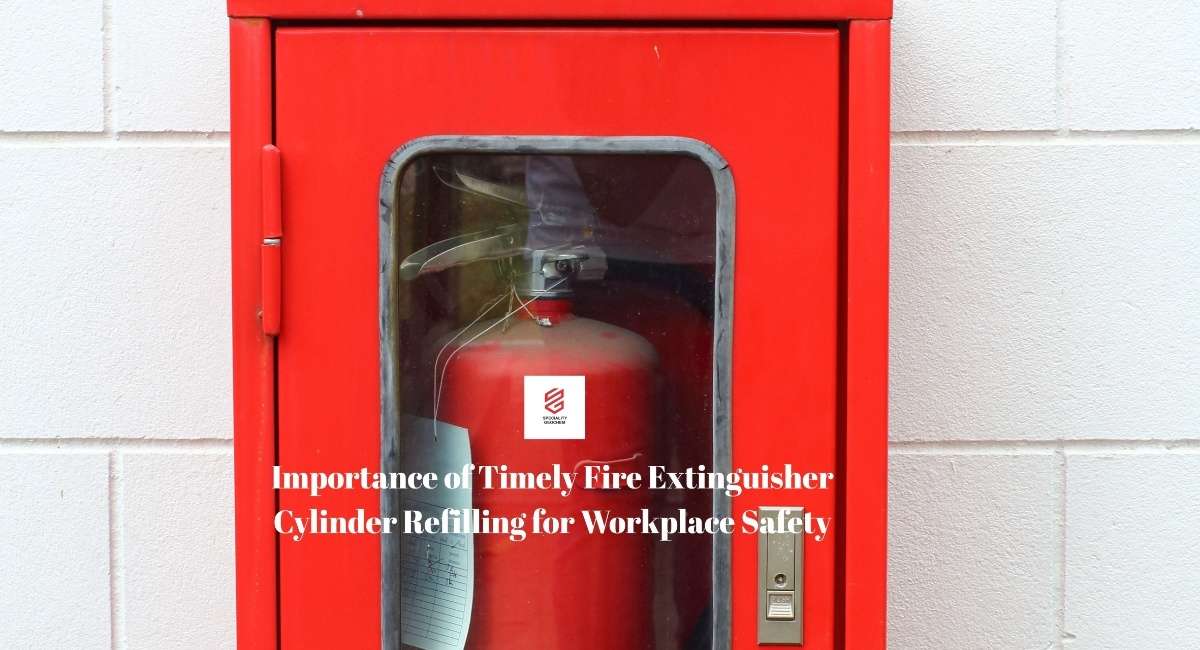Workplace safety is one of the most critical responsibilities for employers and facility managers. Among various risks, fire hazards are the most unpredictable and potentially devastating. While installing fire extinguishers is a standard requirement, their maintenance is often neglected. A fire extinguisher is only effective when it is in proper working condition, which depends on timely fire extinguisher cylinder refilling. Ignoring refilling schedules may leave workplaces vulnerable, turning these lifesaving devices into useless metal containers during emergencies.
This article explores why fire extinguisher cylinder refilling is vital, the process involved, its benefits, compliance requirements, and how businesses can create a proactive fire safety culture.
Why Refilling Fire Extinguisher Cylinders is Essential
Fire extinguishers work on the principle of discharging pressurized extinguishing agents such as dry powder, carbon dioxide (CO₂), foam, or water mist. Over time, these agents may lose effectiveness due to leakage, evaporation, or gradual depressurization.
Without fire extinguisher cylinder refilling, workplaces face these risks:
- Non-functional equipment: An unfilled or expired cylinder will fail to discharge in an emergency.
- Legal non-compliance: Safety regulations in India and globally mandate periodic inspection and refilling.
- Property damage: Even small fires can escalate into major disasters if extinguishers do not function.
- Loss of trust: Employees and clients may feel unsafe in a workplace where fire safety is compromised.
Timely refilling ensures fire extinguishers remain reliable, responsive, and compliant with safety standards.
When Should Fire Extinguisher Cylinder Refilling Be Done?
The refilling schedule depends on the type of extinguisher and workplace conditions. However, general guidelines include:
- After every use – Even partial discharge requires immediate refilling.
- Routine schedule – Typically every 1 year, depending on extinguisher type and manufacturer guidelines.
- Inspection alerts – If pressure gauges show low levels or if leakage/damage is detected.
- Environmental exposure – In humid, dusty, or high-temperature areas, extinguishers may need more frequent servicing.
Employers should maintain a fire safety logbook documenting inspection and refilling dates for accountability.
The Fire Extinguisher Cylinder Refilling Process
Professional refilling follows a systematic procedure to ensure reliability.
- Initial Inspection
- Checking cylinder condition, pressure gauge, and safety seals.
- Verifying labels, manufacturing date, and compliance markings.
- Discharging the Cylinder
- Old extinguishing agent is safely released.
- Cylinder is depressurized before opening.
- Cleaning and Drying
- Cylinder is cleaned from inside to remove residue or corrosion.
- Ensures no contamination of the fresh agent.
- Refilling with Agent
- Specific extinguishing agent (CO₂, ABC powder, foam, or water) is filled as per manufacturer standards.
- Quantity and pressure are carefully measured.
- Repressurization and Sealing
- Cylinder is pressurized using nitrogen or CO₂, depending on type.
- Safety pin and tamper seal are reinstalled.
- Final Testing
- Leak test, weight check, and pressure verification.
- Label updated with refilling date and next due date.
This professional approach ensures extinguishers are safe, effective, and compliant with industry standards.
Benefits of Timely Fire Extinguisher Cylinder Refilling
1. Enhanced Workplace Safety
Refilled extinguishers can instantly control small fires before they spread, protecting lives and assets.
2. Regulatory Compliance
Organizations must adhere to fire safety laws and National Building Code (NBC) requirements. Non-compliance can attract heavy fines or closure notices.
3. Cost-Effective Risk Management
The expense of fire extinguisher cylinder refilling is minimal compared to losses from a fire accident. Preventive maintenance reduces long-term liability.
4. Employee Confidence
Workers feel safer and more confident knowing safety measures are functional. This boosts morale and productivity.
5. Extended Equipment Life
Regular servicing increases the lifespan of fire extinguishers, ensuring maximum return on investment.
Workplace Safety Regulations Related to Fire Extinguisher Refilling
In India, several standards govern fire safety equipment:
- Bureau of Indian Standards (BIS) – ISI Marking
- National Building Code of India (NBC)
- Factories Act, 1948 – Requires industrial establishments to maintain firefighting equipment.
- Local Fire Department Guidelines – Periodic inspection and certification.
Businesses that neglect fire extinguisher cylinder refilling risk legal action, cancellation of fire NOCs, and potential liability in case of accidents.
Choosing the Right Fire Extinguisher Refilling Partner
Selecting a professional service provider is crucial. Look for:
- Certification and License – Verify BIS and ISI compliance.
- Experienced Technicians – Skilled workforce ensures proper handling and refilling.
- Quick Turnaround – Downtime should be minimal.
- Transparent Records – Service reports with refill dates and agent details.
- Comprehensive Solutions – Providers offering inspection, refilling, hydro-testing, and replacement.
For workplaces across industrial, commercial, and residential segments, partnering with a trusted fire extinguisher cylinder refilling company ensures 24/7 preparedness.
Building a Proactive Fire Safety Culture
While equipment maintenance is essential, organizations should also:
- Train employees on fire extinguisher usage.
- Conduct mock drills regularly.
- Install signage and evacuation plans at strategic locations.
- Integrate safety checks into monthly facility management routines.
This comprehensive strategy makes safety more than just a rule to follow—it becomes an integral part of workplace culture.
Conclusion
At Speciality Geochem, we believe that Fire Extinguisher Cylinder Refilling is not just a maintenance task but a crucial step toward building a resilient safety culture. A properly refilled extinguisher is the difference between quick control of a fire and a devastating loss. By prioritizing timely refilling, businesses not only meet statutory obligations but also invest in uninterrupted operations, employee confidence, and long-term security.
Choosing a trusted partner like Speciality Geochem ensures that every cylinder is refilled with precision, tested for reliability, and ready to protect when it matters most. Workplace safety is a responsibility—and proactive refilling is the commitment that turns safety into assurance.

